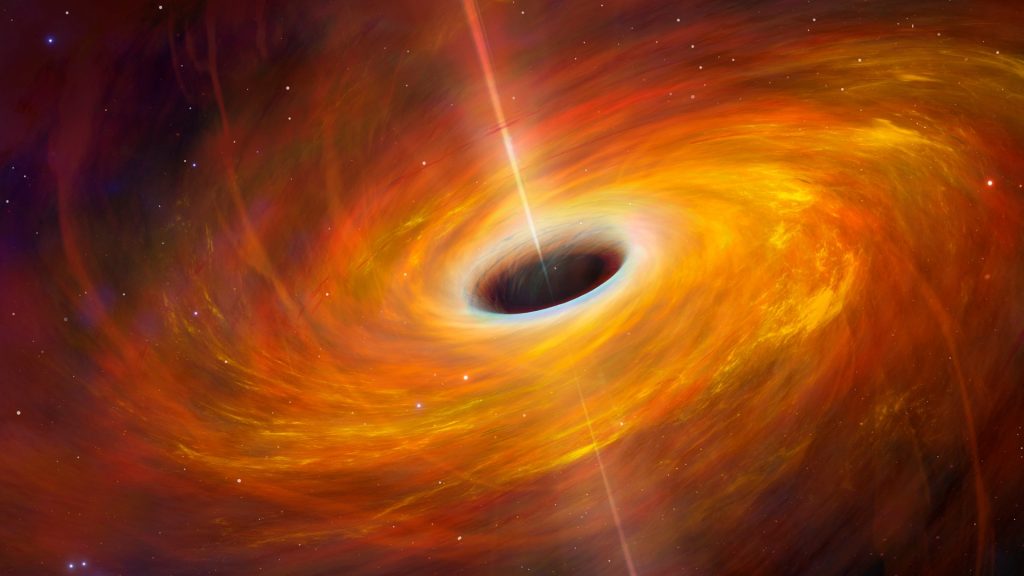
The Universe’s First Giant Black Holes: How They Got So Big So Quickly
The mystery of how the universe’s first giant black holes grew so large, so quickly, has puzzled astronomers and physicists for decades. These supermassive black holes, often found at the centers of galaxies, have masses millions to billions of times that of our sun. Here, we explore the leading theories and recent discoveries that shed light on this cosmic enigma.
Rapid Growth of Supermassive Black Holes
- Primordial Black Hole Formation: One theory suggests that supermassive black holes could have formed directly from the collapse of massive gas clouds in the early universe, bypassing the star formation stage. This idea is supported by recent observations and theoretical models that predict such a process is possible under certain conditions.
- Heavy Black Hole Seeds: Another explanation is that the initial “seeds” of these black holes were already quite massive. These seeds could have formed from the direct collapse of massive gas clouds or through the mergers of smaller black holes. The larger the initial seed, the faster it could grow by accreting gas and merging with other black holes.
- Efficient Accretion: The rate at which black holes can grow depends significantly on their ability to accrete matter from their surroundings. Supermassive black holes might have experienced periods of hyper-efficient accretion, where they rapidly gained mass by pulling in gas from their host galaxies. This would have allowed them to reach their enormous sizes in relatively short cosmic timescales.
- Mergers and Growth Spurts: Black holes can also grow through mergers with other black holes. In the densely packed environments of the early universe, frequent collisions and mergers could have led to rapid growth spurts. Each merger would result in a larger black hole, accelerating the growth process.
Key Discoveries and Observations
- Gravitational Lensing: Recent discoveries through gravitational lensing have revealed some of the largest black holes known to date. These observations help astronomers understand the distribution and growth patterns of black holes across the universe.
- First Evidence of Heavy Black Hole Seeds: The detection of heavy black hole seeds in the early universe provides crucial evidence for the theory that these black holes started with significant masses, allowing them to grow rapidly.
Conclusion
Understanding how the universe’s first giant black holes grew so quickly remains a significant challenge in astrophysics. Theories involving primordial black holes, heavy black hole seeds, efficient accretion, and frequent mergers offer promising explanations. As observational techniques improve and new data is gathered, we move closer to unraveling this cosmic mystery.
“how did supermassive black holes grow so fast”, “first supermassive black holes formation”, “primordial black holes theory”, “heavy black hole seeds early universe”, “black hole accretion rates early universe”, “supermassive black hole mergers”, “how do black holes grow”, “rapid growth of black holes in early universe”, “supermassive black hole seeds discovery”, “black holes without stars formation”, “observations of early universe black holes”, “gravitational lensing black hole discoveries”, “largest black hole discovered 2024”, “first evidence of black hole seeds”, “growth spurts in black holes”, “efficient accretion black holes”, “black hole formation theories”, “early universe black holes research”, “supermassive black hole formation process”, “how big can black holes get”